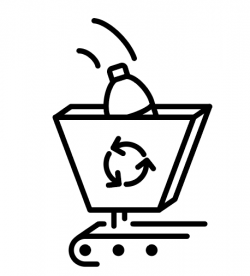FACTS AND LOGIC
- Neem is a sacred plant indigenous to India that has been used for over 2,000 years for medicine, food, fuel and as a pesticide
- Neem products used widely across India and the industry as a whole employs many poor people
- Chetan operates a small business of Neem tree products
- Chetan’s family has owned this business for the last seven generations
- The business employs 60 people in different functions
- Despite being familiar with over 200 applications of the tree and its derivatives, Chetan does not know the exact name of the Neem seed extract, Azadirachtin.
- Ten years ago, Tom Johnson (OOPS) discovered the Neem seeds’ use as a potent pesticide.
- Tom received a patent for the pesticide formula and brought the product to market
- They have the worldwide patent and financial capital to manufacture and sell the product on a large scale.
- People are likely to prefer buying products from US companies over small Indian cottage, affecting Chetan’s business
STAKEHOLDERS AND MOTIVATIONS
- OOPS
- Prof: Make a profit to benefit shareholders and employees
- Personal: Make as much profit as possible
- Chetan
- Prof: Keep his employees employed and his family business running
- Personal: Honor his family by running this business
- Chetan’s employees
- Prof: Want to make a living
- Personal: Want to support their families and have a job
- Other Indian growers of Neem trees
- Prof: money/job security (same as Chetan’s employees)
- Personal: feeding families, social worth (same as Chetan’s employees)
- Competing companies
- Prof: Same as OOPS
- Personal: Same as OOPS
- Consumers in India
- Prof: n/a
- Personal: want an affordable Neem product
SOLUTIONS
- Try and employ the people affected- while this will keep the employees and local economy sustained, it will not protect the family business and the legacy the business had in local culture.
- Work with locals to create a new formula and have a shared patent- this would allow both companies to work together and thus preserve both businesses, however, this is not very likely to actually happen. The larger company will most likely just absorb the smaller one like what happened in the first solution. The legal enforcement and logistics behind this solution also make it much more difficult and ineffective. Additionally, there might not be a new and better patent out there.
- Try and persuade the government to not accept the subsidized goods- the family business will be protected but this might also cause tension between the US and India which wouldn’t be good for anyone. And, who’s to say that the Indian gov’t would even go for that deal.
THE BEST COURSE OF ACTION
The best course of action would be to adopt the first proposed solution. The large US company will be able to create jobs for Chetan’s current employees and provide Neem products to the people who want them. Working in a large and profitable company will likely raise the standard of living of employees.
IMPLEMENTATION STEPS
- Send an email to the company that the larger company wishes to merger with the family owned one.
- Begin the legal and financial processes of merging/absorbing the two companies together.
- Bring the employees over from the family owned business
- Make Chetan an executive of the manufacturing and processing processes in India.
Part 2:
FACTS AND LOGIC
- OOPS is crushing the Indian market
- Chetans wrapper features his grandfather, a local legend
- OOPS wrapper features Tom
- Chetan will have to lay off many employees at current state
- Tom open to merging if it means more profit
- Chetan was seen having meetings with Tom and employees believe Chetan is a sell out
STAKEHOLDERS AND MOTIVATIONS
See part one, Chetan additionally wants to save face
ALTERNATIVE SOLUTIONS
- OOPS absorbs Chetan’s Business- this is good because the employees and livelihoods of the employees may be preserved, but the employees might not be treated as well as they were when working under Chetan.
- Chetan lays off employees and tries to remain in the market- one pro to this option is that some employees can maintain their way of life, but bad because the employees who got laid off now don’t have a livelihood.
- Chetan sues OOPS in an attempt to regain footing in the market- he may be able to separate his buisiness from OOPS in a way that they both have niche markets, however, the cost of a lawsuit is probably too much for Chetan to pay and there is only unstable grounds on which Chetan can sue.
Choose Best Solution:
Option 1 is the best solution for both Chetan and his employees. Although Chetan will probably face backlash from his employees (they’ll say he is a sellout), this is the best financial outcome for Chetan and his employees. OOPS might recognize them for their expertise and they may be able to get advisory/manager roles within the company.
IMPLEMENTATION STEPS
- Chetan sends an email to the company that the larger company wishes to merger with the family owned one and manages expectations while explaining why this is a good move for their company.
- Begin the legal and financial processes of merging/absorbing the two companies together, making sure to specify that Chetan and his employees get good roles within the larger company.
- Bring the employees over from the family owned business
- Chetan will begin his leadership position and maintains his old company values with his old employees.
